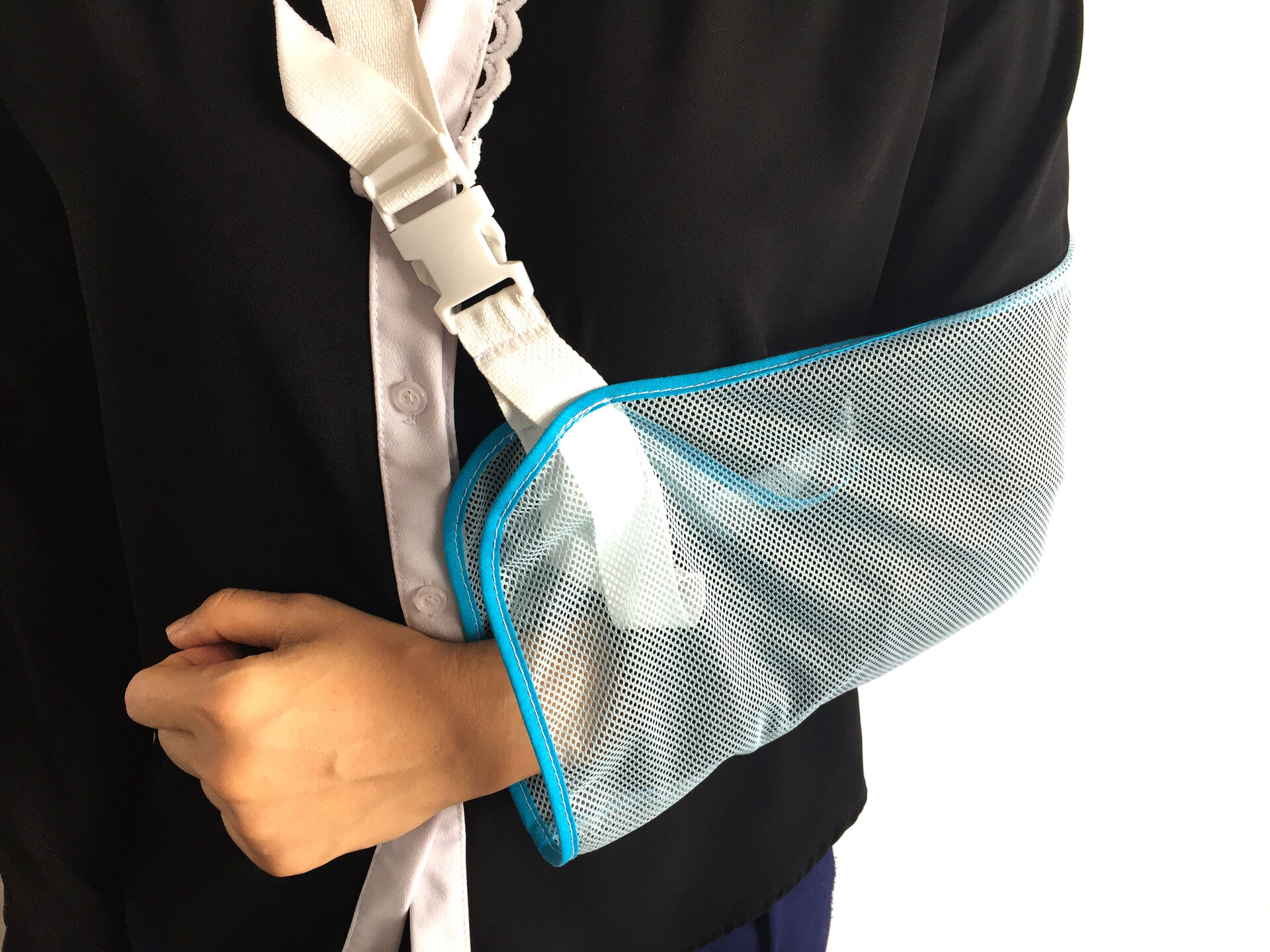It’s a three-step process:
- Swear loudly
- Put it in a sling
- Get it checked out as soon as possible
The first step is optional.
The second and third must occur!
Even if your shoulder pops out and then pops back in, you still need to get it checked out.
A dislocation will stretch and strain the ligaments and joint capsule, which will lead to a loose and unstable shoulder if not treated properly.
Step two: put a sling on it as soon as you can find one
A sling is used to unload the shoulder joint, thus decreasing the risk of stretched ligaments and a loose joint.
Generally, a sling is used for 1-4 weeks to give the structures time to tighten. A sling is also used to prevent you putting your shoulder in a closed-packed position.
What is that? It is the position in which the joint is wound up tightest.
This position puts the most strain on the ligaments and capsule, so it needs to be avoided in the short term.
The closed packed position for the shoulder is 90˚ abduction (arm out to side) and full external rotation (shoulder rotated away from body). Or in other words; the ‘stop sign’ arm position.
You need to avoid the stop sign position for 6-8 weeks. Seriously 6-8 weeks. This allows the shoulder time to heal tightly.
A tight shoulder can be loosened.
A loose shoulder can’t really be tightened without surgical intervention.
Step three: go and see your physiotherapist as soon as you can get an appointment
Your physiotherapist will possibly send you for some sort of scans (MRI, CT, X-Ray) to ensure the bony surfaces and the soft tissues of the joint capsule are intact.
This will depend on their clinical assessment of the joint.
The management plan from there, is to firstly let your joint tighten as described above.
You will need to wear your sling for 1-4 weeks.
After this, there will be a gradual mobility program without putting your shoulder into the closed-packed position (you still need to avoid the stop sign position for another few weeks).
Taping is also used to continue to unload the joint when the sling comes off.
Once the physiotherapist is satisfied that everything is intact and the joint is sufficiently tight, they will assist you to regain movement and strength in all ranges of movement.
They will address stability, endurance, control, and proprioception (joint position sense and awareness), and get you back to doing what you love doing as soon as possible.
Please follow the early management steps to prevent a lax shoulder.
Recurrence is common with dislocations and surgery is often required to regain stability.
Proper management in the early stages is so important to (hopefully) avoid both recurrence and surgery.
Just remember: A tight shoulder can be loosened. A loose shoulder can’t really be tightened without surgical intervention.
I should clarify that this is the management plan for a young to moderately young person with a dislocation.
The oldies (you know who you are) need to get their shoulders moving sooner, as once they tighten, they sometimes don’t like to loosen again.
Either way: Put on a sling and go see the physio.
Give us a call on 93843269 or book an appointment online.

